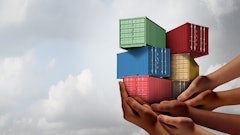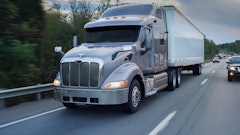
When Starbucks recently announced it was fully embracing the middleman through a joint venture with Uber Eats, it took a giant step in revolutionizing the food industry distribution channels. This step was only possible due to the foundational groundwork it began back in 2009.
Starbucks Embraces Tech Innovation
In 2009, Starbucks launched its Starbucks Card App – which emphasized on loyalty rewards and simplifying the payment process in stores. Each time a user made a purchase through the app the user received a “star” and was eligible for promotions. Once the user collected enough “stars,” the user would receive a free drink or a different perk.
It wasn’t until 2015 when Starbucks launched its Mobile Order and Pay that it knew this trend had sprouted legs. However, it ran into many hurdles. The technology was too disruptive to the current layout of the stores as it still required customers to wait in line for their orders they made through the app.
Starbucks Adapts to Tech Disruption
By changing its store layouts, Starbucks created a separate distribution channel in the form of a separate pick-up area to accommodate their Mobile Order and Pay customers. This change was made storewide and, in many cases, required a complete redesign of the store layout.
Now Starbucks has added an additional distribution channel through its joint venture with Uber Eats. Uber Eats delivery pick-ups will be able to utilize the same Mobile Order and Pay pick up area, unless and/or until the design model will require adaptation.
Starbucks is a Tree
Starbucks’ joint venture with Uber Eats will succeed so long as it fully embraces the middleman technology and becomes a tree. Yes, a tree. The roots below the ground are approximately the same depth and width of the tree canopy above. Why? Because the business of the tree gets done in the leaves and the roots. The more roots and leaves you have, the more transactions are going on back and forth. Now, I understand looking at one Starbucks store hardly looks like a root system, but if you zoom out in your mind’s eye, or even on the Starbucks app map, you can start to see the root system take shape. All of the stores are now a root stem sending their products into the distribution channel to be transported up the trunk to the leaves, the customers. I may be the only person to compare Uber Eats to a tree trunk, but the point is that the trunk is just the transport system between the leaves to the roots. To use one more tree reference, Starbucks removed the logjam of its distribution channel problem by eliminating the need for the customer to set foot in their store.
Applying Starbucks’ Strategies on a Smaller Scale
Keep in mind that Starbucks controls many variables that are outside the control of most food industry businesses. Starbucks has years and years of data to support its business moves. It also controls almost all of its lease documents as a “take it or leave it” deal with the property owner, as well as its store model designs. That doesn’t mean the rest of the food industry is left out.
Like Starbucks, my clients and I review the data in order to strategically streamline the distribution of their products. It requires more than just coming up with a way to increase the distribution channels if the restaurant client doesn’t control all of the variables like Starbucks does. Part of the strategy comes in the form of negotiating vendor agreements and leases. One of the key negotiating points in my restaurant clients’ leases are tenant improvement allowances to build out additional takeout areas and to ensure that service charges, such as takeout order and third-party service fees are excluded from calculating the gross sales for percentage rent purposes. This means that if the total fee for a food delivery app order was $100, but $7 of that order went to the food delivery app charge, the landlord could only calculate $93 as gross sales. That might not seem like a big number, but one of my clients sells approximately $11,000 out of one location and $8,000 out of another location each week utilizing Door Dash alone. That’s close to $1,000,000 annually in food delivery app sales. If we had not negotiated out the service charges from the gross sales calculation, my client wouldn’t be able to boast his roughly 40 percent profit on food delivery app sales to its investors. These numbers translate across the board to almost all of my restaurant clients that have properly adapted to these innovations. They are now reaching more customers through additional distribution channels and some are even adopting the commissary model to increase their production capabilities to meet the new demand that their kitchens can’t supply.
Evolve to Fit Customer Demand
It’s an exciting time to be in the food industry. Starbucks is exemplary in its forethought, planning and ability to adapt to changes that businesses will need in order to succeed as innovations continue to change the food industry. I’m predicting Starbucks’ joint venture with Uber Eats will be very successful due to the fact that customers continue to pay a premium to have their quality food delivered as conveniently as possible, and the distribution channels utilized to meet customer needs will become more efficient as they adopt the basic natural models. We should all strive to be a tree this Earth Day. It’s great for business.



















